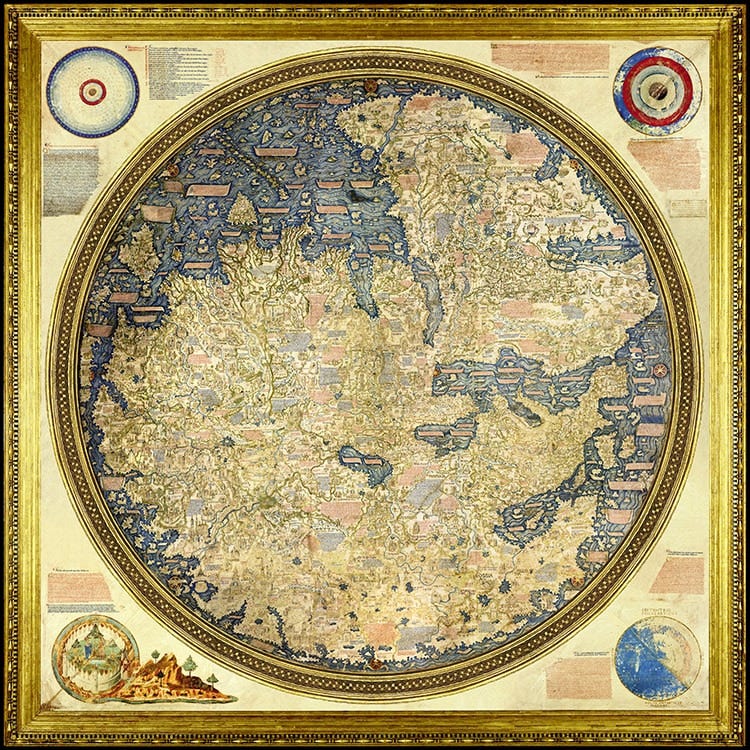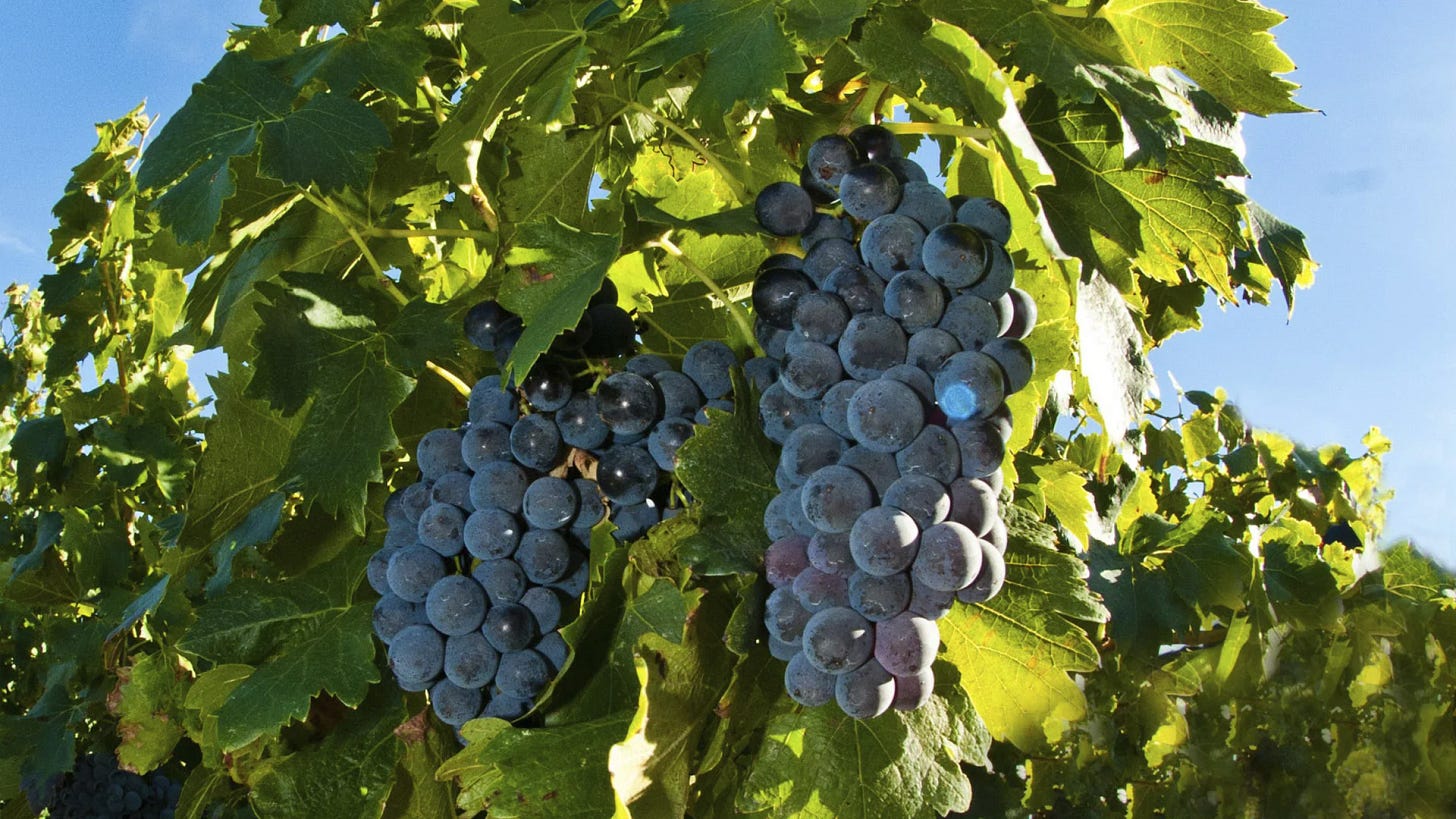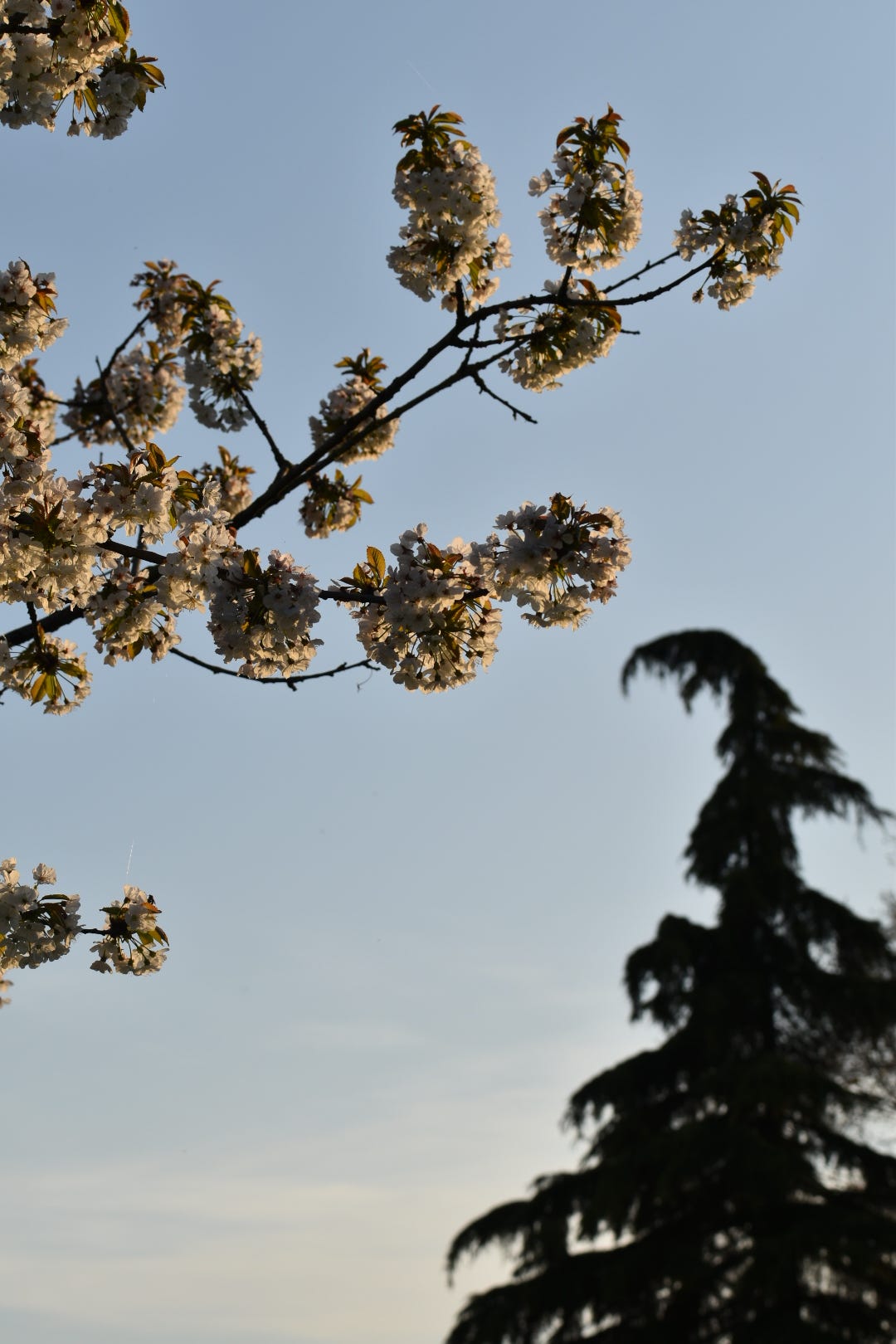On Ancellota; or a General Confusion about Simplicity and Greatness
a minor variety and a neighbor's vines got me thinking
Two weeks ago I returned to the Po Valley and the little winery just for the advent of spring. It’s my first time arriving here to everything in tremendous bloom—all the fruit trees in the park in front of the winery and house crowned with white blossoms, the drive back from the airport becoming increasingly verdant, the farther out from the city you go. You can see that around here people care about their gardens, seen in the diversity and age of trees, well-shaped flowering plants, plus signs of utility, too: stone outdoor ovens, chicken coops, lettuces peeking up from the ground.
A neighbor has planted a tiny strip of new vineyard right nearby, behind his fancier house: P immediately identifies it as Ancellotta. Ancellotta is a variety cultivated throughout Reggio Emilia and around Modena in particular, gaining popularity about two hundred years ago, in order to give darker color and a bit more weight to bulk-produced Lambrusco. The grape’s name immediately brings up the English word ancillary: first noted in the 1660s, from the Latin ancilla, or “handmaid.” So ‘handmaid’ evolves into the concept of subordinate, an aid, certainly appropriate for this particular vine: “aiding” the color and weight of Lambrusco and other red wines from nearby regions, like Reggio and Valpolicella.
Humans will go to such lengths to reinforce our own conceptions, such as developing an entire variety in the medieval period and then propagating it abundantly throughout the 1800s, as in this region, in order to, you know, make sure red wines look red enough, feel dark and hefty enough to be understood as “real” red wine. Meanwhile I’ve noted that, if extracted gently, the native Ruberti here is not in fact dark or opaque at all. In the 2024 growing season, it was cool, full of clouds and rain, and so the resulting wine’s color has very deep purple and black tones that signal the cool quality of the year—because the wine was not over-handled, though, it still has a glowy translucence and clarity. I have a smart friend who says about wine that greatness is not in fact about power or flash, but rather, “intensity without weight.”
Mind, the Lambrusco family of varieties is naturally leaner in character; they can be slender and delicate, with super-high acid levels and fine but noteable tannins that can turn rude, as well as having deep red and purple fruits that can shut down into intense reduction, if you don’t know what you’re doing in the cellar or are farming poorly. Ancellotta was promoted centuries ago when the nervy, wildling Lambrusco varieties likely needed the handmaiden, a smoothing and filling-out sort of assistance. But in the modern winemaking moment, with warmer temperatures over all the world, Lambrusco varieties are fully sufficient to be rendered into “complete” and indeed very elegant wines—no need to over-stuff the turkey.
I’ve noted that wines whose profundity is more subtle often get lost among the more status-concerned and maybe rookie drinkers out there. When I was in college, industrial Malbec from Argentina tasted delicious to me—rich, robust, chocolatey. I also had a young American palate absolutely besotted with processed fats and sweets, Kraft cheese singles and fishsticks. I arrived to the joys of dandelion greens and spinach and the beauties of freshness, length, and acidity later on. Appreciating subtlety takes curiosity, time, and not a little bit of learning.
I think there are a lot of poets like this, too, whose simplicity hides excellence of craft: Mary Ruefle, Pablo Neruda, Wisława Szymborska, Robert Frost, Kenneth Koch, Ross Gay. These are all poets I really admire, but you can miss their seriousness if you’re worried, you know, about whether the poems are “poem” enough. They don’t have the overt complexity of other poets I love too, but who are perhaps harder to access and understand, therefore taken to be more important: Anne Carson, John Donne, Emily Dickinson, Wallace Stevens, John Ashbery. I love all of those too, it’s just that sometimes we mistake grandeur and immediate power for the only thing that constitutes seriousness.
Likewise, I read an interview in a book about the culture of Lambrusco production in Modena, a compilation of various producers remarking on their specific varieties and practices. Modena’s only about an hour and a half due south from here, and most of the Lambrusco culture there has overlap with this province in the river plains. In the interview with a very well-regarded small producer of Lambrusco known as ‘the Prof,’ there is this sort of unbelievable exchange:
« Interviewer: Does great Lambrusco exist, in your opinion?
Prof: Oh, come on, it’s a table, everyday wine, light and easy-drinking. And rightly so.
Interviewer: So, no Lambrusco can actually score 90 points?
Prof: Within its category, yes, it might. But a 90-point Sorbara is not equivalent to a 90-point Barolo. This is my opinion: I don’t consider Lambrusco to be a great wine, but a very enjoyable and unique wine, yes, no doubt. »
I was startled by this exchange: first, to see the totally unironic use of point scores as a measure of “greatness” in a book published as recently as 2017; second, to have a dedicated natural producer of a specific, historical grape variety basically say it’s not as “good” as Nebbiolo. I just… What does great even mean? How do we set up these aesthetic ladders of rank? And how do we persist at the point where we’re still planting the handmaiden for color and alcohol, decades after a farming moment where the addition of color and ripeness are necessary? Why does “light” and “easy-drinking” translate to less great? The farther into this I think, the more I suspect we are all really wasting our time talking about greatness.
Once I listened to a well-known New York sommelier, raised in Philly, tell me in a voice of punchy defiance that when he started his career he decided he was going to “drink the greatest wines in the world.” I think this was supposed to communicate some kind of ambition, a Muhammad Ali-style I AM THE GREATEST, which is so, so dumb, because we were talking about… wine. Not global-level sportmanship or the shattering of demographic barriers. This was back in 2017 or so that this sommelier said this, so of course that meant his career focused completely on Burgundy. I cannot tell you how much these sorts of received judgments drain the life out of me. Even though I feel a lot of awe for the monks and their discipline, research, and discoveries in viticulture during the medieval period, I know that’s not the part of Burgundy this guy was interested in.

I wonder if the neighbor with the new stripe of Ancellotta perhaps has watched the progression of the new vineyards here, right next door to him – about .8ha of babies in their fourth, third, and second springs – and thought to themselves, perhaps I could have a little something, too. Surely this ancillary fruit will be sold to some sort of larger, commercial producer, though; it won’t go into a little wine of their own, as viticulture and winemaking used to be practiced here and throughout many pockets of Italy, for personal consumption. It would likely make a very simple wine, anyway, lacking depth and length or transparency of terroir—but then again, even the older experts and fine individual producers of Lambrusco are saying that about Lambrusco, so who knows?
What if great and simple were not at such long arms’ lengths from each other? What are we missing that we dismiss because of these kinds of aesthetic judgments—and indeed I wonder whether it all tips over into moral judgment, too?
I leave you with an (overtly) simple excerpt from Kenneth Koch, the first third of a longer poem just called In Love With You, published in 1955.
Isn’t this history, and aren’t we a couple of ruins?








